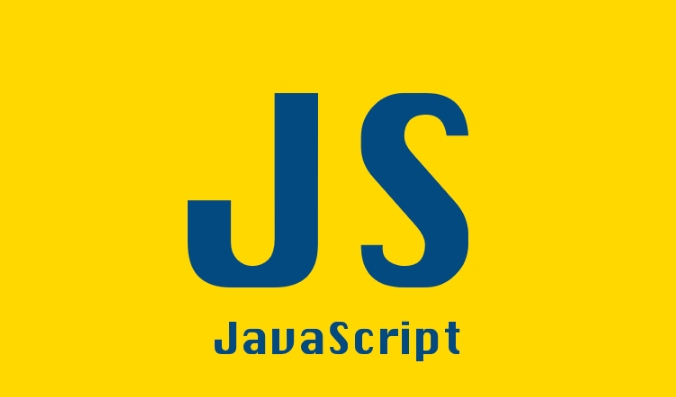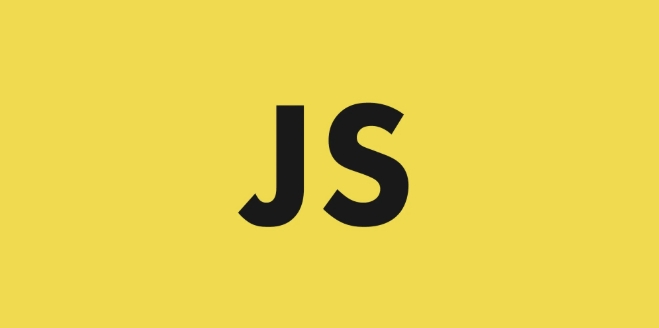Use addEventListener() is a recommended method for handling events, supporting multiple listeners, separating code, and flexible functions; 2. Inline event handlers (such as onclick attributes) are not recommended because they mix HTML and JavaScript, are difficult to maintain, and only support a single handler; 3. Binding events through DOM element attributes (such as onclick) will overwrite existing handlers, and multiple responses cannot be added safely; 4. The event callback function receives event objects containing information such as type and target. Common event types include click, keydown, submit, change, load, and mouseenter; 5. Event delegation efficiently handles dynamic child elements by listening to events on the parent element and checking event.target to improve performance; 6. RemoveEventListener() should be used Remove listeners that are no longer needed to avoid memory leaks, but only named functions instead of anonymous functions; in summary, the best practice is to use addEventListener() to achieve flexible and clear event handling, avoid inline handlers, and adopt event delegates in appropriate scenarios.

Handling events in JavaScript is a core part of making web pages interactive. Events are actions or occurences—like a user clicking a button, pressing a key, or a page finishing loading—that the browser can detect and respond to. Here's how you typically handle them:

1. Using addEventListener() (Recommended Approach)
The most common and flexible way to handle events is using the addEventListener() method. It allows you to attach one or more event listeners to a DOM element without overwriting existing ones.
const button = document.getElementById('myButton');
button.addEventListener('click', function() {
alert('Button clicked!');
});You can also use arrow functions:

button.addEventListener('click', () => {
console.log('Clicked!');
});Why it's preferred:
- You can add multiple listeners for the same event.
- Clean separation of JavaScript and HTML.
- Better control over event handling (eg, use of options like
once,passive).
2. Inline Event Handlers (HTML Attributes)
You can define event handlers directly in HTML using attributes like onclick , onmouseover , etc.

<button onclick="alert('Clicked!')">Click me</button>
While simple, this approach is generally discouraged because:
- Mixing HTML and JavaScript reduces maintenance.
- Harder to manage in larger applications.
- Only one handler can be assigned per attribute.
3. DOM Element Properties (eg, onclick )
You can assign event handlers via JavaScript by setting properties like onclick , onload , etc.
const button = document.getElementById('myButton');
button.onclick = function() {
alert('Clicked!');
}; ?? Limitation: This method overwrites any previous handler assigned to onclick .
You can't do this safely:
button.onclick = function() { /* handler 1 */ };
button.onclick = function() { /* handler 2 */ }; // ? Overwrites the first4. Event Object and Common Event Types
When an event fires, the callback function receives an event object with useful properties:
button.addEventListener('click', function(event) {
console.log(event.type); // "click"
console.log(event.target); // The element that was clicked
});Common event types include:
-
click– mouse click -
keydown,keyup– keyboard input -
submit– form submission -
change– input value change -
load– page or resource finishes loading -
mouseenter,mouseleave– hover interactions
5. Event Delegation
Instead of attaching listeners to many child elements, you can attach a single listener to a parent and use event.target to identify the actual source.
Useful for dynamic content:
document.getElementById('parent').addEventListener('click', function(event) {
if (event.target.tagName === 'BUTTON') {
console.log('A button was clicked:', event.target.textContent);
}
});This way, newly added buttons will still be handled.
6. Removing Event Listeners
To avoid memory leaks or unwanted behavior, remove listeners when no longer needed:
function handleClick() {
console.log('Clicked once!');
button.removeEventListener('click', handleClick);
}
button.addEventListener('click', handleClick);Note: You can't remove anonymous functions—use named functions instead.
In short, the best practice is to use addEventListener() for flexibility and clean code, avoid inline handlers, and consider event delegation for performance and dynamic content.
The above is the detailed content of How do you handle events in JavaScript?. For more information, please follow other related articles on the PHP Chinese website!

Hot AI Tools

Undress AI Tool
Undress images for free

Undresser.AI Undress
AI-powered app for creating realistic nude photos

AI Clothes Remover
Online AI tool for removing clothes from photos.

Clothoff.io
AI clothes remover

Video Face Swap
Swap faces in any video effortlessly with our completely free AI face swap tool!

Hot Article

Hot Tools

Notepad++7.3.1
Easy-to-use and free code editor

SublimeText3 Chinese version
Chinese version, very easy to use

Zend Studio 13.0.1
Powerful PHP integrated development environment

Dreamweaver CS6
Visual web development tools

SublimeText3 Mac version
God-level code editing software (SublimeText3)
 Python GUI programming: Get started quickly and easily create interactive interfaces
Feb 19, 2024 pm 01:24 PM
Python GUI programming: Get started quickly and easily create interactive interfaces
Feb 19, 2024 pm 01:24 PM
A brief introduction to python GUI programming GUI (Graphical User Interface, graphical user interface) is a way that allows users to interact with computers graphically. GUI programming refers to the use of programming languages ??to create graphical user interfaces. Python is a popular programming language that provides a rich GUI library, making Python GUI programming very simple. Introduction to Python GUI library There are many GUI libraries in Python, the most commonly used of which are: Tkinter: Tkinter is the GUI library that comes with the Python standard library. It is simple and easy to use, but has limited functions. PyQt: PyQt is a cross-platform GUI library with powerful functions.
 How to manage a complete circular queue of events in C++?
Sep 04, 2023 pm 06:41 PM
How to manage a complete circular queue of events in C++?
Sep 04, 2023 pm 06:41 PM
Introduction CircularQueue is an improvement on linear queues, which was introduced to solve the problem of memory waste in linear queues. Circular queues use the FIFO principle to insert and delete elements from it. In this tutorial, we will discuss the operation of a circular queue and how to manage it. What is a circular queue? Circular queue is another type of queue in data structure where the front end and back end are connected to each other. It is also known as circular buffer. It operates similarly to a linear queue, so why do we need to introduce a new queue in the data structure? When using a linear queue, when the queue reaches its maximum limit, there may be some memory space before the tail pointer. This results in memory loss, and a good algorithm should be able to make full use of resources. In order to solve the waste of memory
 Event processing library in PHP8.0: Event
May 14, 2023 pm 05:40 PM
Event processing library in PHP8.0: Event
May 14, 2023 pm 05:40 PM
Event processing library in PHP8.0: Event With the continuous development of the Internet, PHP, as a popular back-end programming language, is widely used in the development of various Web applications. In this process, the event-driven mechanism has become a very important part. The event processing library Event in PHP8.0 will provide us with a more efficient and flexible event processing method. What is event handling? Event handling is a very important concept in the development of web applications. Events can be any kind of user row
 Analysis of v-on directive in Vue: how to handle form submission events
Sep 15, 2023 am 09:12 AM
Analysis of v-on directive in Vue: how to handle form submission events
Sep 15, 2023 am 09:12 AM
Analysis of the v-on directive in Vue: How to handle form submission events In Vue.js, the v-on directive is used to bind event listeners and can capture and process various DOM events. Among them, processing form submission events is one of the common operations in Vue. This article will introduce how to use the v-on directive to handle form submission events and provide specific code examples. First of all, it is necessary to clarify that the form submission event in Vue refers to the event triggered when the user clicks the submit button or presses the Enter key. In Vue, you can pass
 What is the meaning of bubbling events
Feb 19, 2024 am 11:53 AM
What is the meaning of bubbling events
Feb 19, 2024 am 11:53 AM
Bubbling events mean that in web development, when an event is triggered on an element, the event will propagate to upper elements until it reaches the document root element. This propagation method is like a bubble gradually rising from the bottom, so it is called a bubbling event. In actual development, knowing and understanding how bubbling events work is very important to handle events correctly. The following will introduce the concept and usage of bubbling events in detail through specific code examples. First, we create a simple HTML page with a parent element and three children
 Using $listeners to pass event handling functions in Vue
Jun 11, 2023 pm 03:09 PM
Using $listeners to pass event handling functions in Vue
Jun 11, 2023 pm 03:09 PM
In Vue, there are often some nested components, and events need to be passed between these nested components. In Vue, the $emit event is used for event communication between components. However, in some cases, we need to pass the event handler of a parent component to a nested child component. In this case, using the $emit event is not appropriate. At this time, you can use the $listeners provided by Vue to pass the event processing function. So, what are $listeners?
 In-depth study of the key code implementation of PHP and Vue in the brain map function
Aug 27, 2023 pm 12:15 PM
In-depth study of the key code implementation of PHP and Vue in the brain map function
Aug 27, 2023 pm 12:15 PM
In-depth study of the key code implementation of PHP and Vue in the brain map function Summary: This article will delve into the key code implementation of PHP and Vue in the realization of the mind map function. Brain mapping is a graphical tool commonly used to display thinking structures and relationships. It is widely used in fields such as project planning, knowledge management, and information organization. By learning the relevant knowledge of PHP and Vue, we can implement a simple yet powerful brain mapping application. Understand PHPPHP is a commonly used server-side scripting language. It is easy to learn and highly scalable
 Practical applications of event bubbling and applicable event types
Feb 18, 2024 pm 04:19 PM
Practical applications of event bubbling and applicable event types
Feb 18, 2024 pm 04:19 PM
Application scenarios of event bubbling and the types of events it supports. Event bubbling means that when an event on an element is triggered, the event will be passed to the parent element of the element, and then to the ancestor element of the element until it is passed to the root node of the document. It is an important mechanism of the event model and has a wide range of application scenarios. This article will introduce the application scenarios of event bubbling and explore the types of events it supports. 1. Application scenarios Event bubbling has a wide range of application scenarios in web development. Here are several common application scenarios. form validation in form






